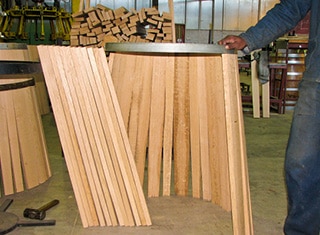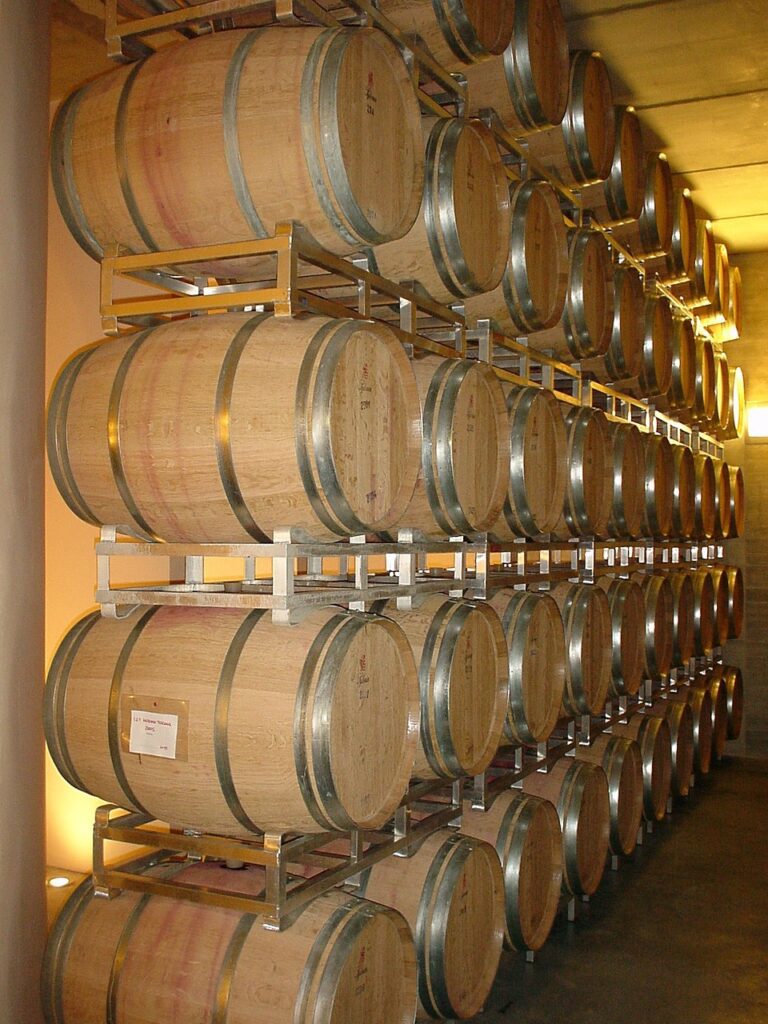Brett has become a fashion word in the wine industry. Although it causes typical off-flavours, other wine faults that are not caused by it are also sometimes attributed to it. It applies especially when some wine writers are looking for descriptive terms to evaluate a wine.
Recent research indicated that the appearance of sulphite tolerant strains of Brettanomyces are increasing. Sulphur dioxide additions after malolactic fermentation is one of the practices to control the yeast, but as result of the trend that the pH of red wines is increasing, it is sometimes difficult to ensure that sufficient sulphur dioxide is added. Barrels infected by Brett must consequently be sanitised in some way. If only one barrel is infected the best solution is to stop using it. If more barrels are however involved this cannot be done and other sanitation methods must be considered.
Micro-organisms grow mostly in the wine and air interphase, especially when containers have an ullage and the sulphur dioxide concentration in the wine is not high enough. Micro-organisms can however also occur up to 8 mm inside the barrel staves, when the wine penetrates the staves. It is consequently much more difficult to sanitise barrels than steel tanks. Barrels must therefore be cleaned properly, before sanitation by removing the solids and cream of tartar from the inside.
After barrels are emptied, they must be drained and rinsed for three minutes with high pressure cold water, using a rotating jet. This will loosen and remove the solids like yeast lees, pigments, proteins, polysaccharides and cream of tartar. It can be followed by a hot water (60 – 82°C) rinse for three to five minutes to remove the remaining colour matter and cream of tartar from the inside. An inspection light can be used through the bung hole to monitor the efficiency of the process. Hotter water and/or steam can be used to remove still remaining cream of tartar.
Chemical methods must rather not be used. A 0,5% citric acid solution may help to remove the cream of tartar, but as result of its reaction with the wood cellulose the lifespan of barrels can be shortened. Sodium carbonate, potassium carbonate and peroxicarbonate solutions can leach the oak flavours. Due to the potential formation of chlorophenols and chloro-anisoles, chlorine solutions can also not be used. Although chitosan (a polysaccharide) is used by some winemakers to decrease the Brettanomyces population in wines, no information regarding its use for the sanitation of barrels is available.
Steam can kill yeast up to a depth of 2 mm in cleaned barrel staves. Neither high pressure warm water, steam, ozone, dissolved sulphur dioxide or sulphur dioxide gas can however deactivate yeast at a depth of 8 mm in barrel staves. Recent research has indicated that steam must be applied for at least 10 minutes to reach temperatures above 57.5°C at a depth of 8 mm inside staves. This is the temperature required to kill Brettanomyces.
The treatment of barrels with hot water of at least 85°C for 20 minutes eliminates viable acetic acid bacteria if the temperature of the water is at least 60°C at the end of the treatment. This led to the development of a protocol for the sanitation of Brettanomyces-contaminated barrels by the Australian Wine Research Institute (AWRI). According to this protocol, Brettanomyces-contaminated barrels can be sanitised to a depth of 5 – 9 nine mm in barrel staves by a water treatment of 30 minutes at 70°C or 20 minutes at 80°. These temperatures can be reached by filling barrels with water at 70°C and further heating it by using a spray nozzle of a hot water pressure pump. The decrease in temperature of the hot water is limited and water can be used four times before further heating is required. The hot water can damage the stator of pumps and it must be considered to siphon the water between barrels.
Although the shaving and retoasting of barrels were considered a possibility in the past, it is not efficient to remove all viable Brettanomyces cells, which penetrate deeper into the wood. This treatment, as well as the treatment with dry ice, also require the removal of the barrel heads, which is a more elaborate process than the hot water treatment. High pressure ultrasound treatment of barrels filled with hot water is also efficient for the Brettanomyces treatment of barrels, but special equipment is required to apply it.
After barrels are treated, the success thereof must however be monitored. It can be done by filling the barrel with 4 L sterile water or wine, without a preservative and leaving it for 24 hours after rolling the barrel. The liquid can be sampled and analysed for viable micro-organisms (Cowey, 2019).


Micro-organisms penetrate into barrel staves.
References
Anonymous, 2019. Brett on the rise again? Australian and New Zealand Grapegrower and Winemaker, October 2019: 50.
Cowey, Geoff, 2019. What does the latest research say about barrel sanitation against Brett? Australian and New Zealand Grapegrower and Winemaker, October 2019: 76 – 77.













